World war with personal cars: MaaS strides the planet

For several years now, the future of transport has been discussed in narrow circles. They say that all types of transport and all modes of movement of people should be combined into a single service of "mobility", simple and convenient to receive and pay. This concept is called Mobility-as-a-Service (MaaS) - a merger of all transport operators, private and "state", into a single virtual provider. Clear? Unlikely. Let's try to figure out what kind of MaaS is and what role technology and, in particular, smartphones will have in the future transport revolution.
How does this work with respect to transport?
The concept of mobility as a service does not have a single clear definition, but it implies a number of signs that transport infrastructure must meet in order to be considered a service. Transport service should be carried out through a single application - through it they plan routes and pay for travel, no matter what type of city transport is involved and whoever owns the bus, car or bicycle. Under this concept, the user does not need an application with a metro map, a navigator with information about the situation on the roads, Google Maps with routes, an application for replenishing a transport card, car sharing applications from different companies, cycling, intercity buses, etc. All functions related to transport must be combined together.
Implementation of Mobility-as-a-Service (MaaS) requires the emergence of a single digital platform that will unite various types of transport operators and make it easy to pay for their services and subscribe to service packages. The ultimate goal of MaaS is to abandon your personal car in favor of convenient, fast and affordable transportation services.
For states, MaaS has its advantages. Firstly, transport will be used with greater efficiency, which will reduce its number and unload roads. Secondly, the number of private cars will decrease, and because of this, traffic jams will again decrease and the environment will improve, which European cities are especially keen on. Thirdly, the full digitalization of transport will allow the collection of Big Data, and the data, in turn, will help to more rationally determine the vector of development of the city.
And now the paradox: we have been using MaaS elements for a long time, but at the same time there is no real full-fledged MaaS anywhere in the world. There are dozens of services around the world with different MaaS features - we will talk about the most interesting of its kind. But first, a little theory.
MaaS Topology
There is no official gradation of the implementation of MaaS, but a seven-step system was proposed by enthusiasts, each level in which implies that transport services meet certain criteria. By the way, the concept of MaaS levels was created under the impression of the levels of automobile autopilot.
Level 0: complete lack of MaaS. Imagine urban public transport as it was 20 years ago - different tickets for ground transportation, metro, trains, a schedule on a paper poster and complete ignorance of why the tram has not been around for 20 minutes and whether it will appear at all.
Level 1:partial integration of private companies. The first level is the partnership of private transport companies offering combined tickets. For example, in one ticket a passenger gets a train and bus ride from the station to the city center.
Level 2: integration with municipal transport. Similar to the first level, combined public transport is included in the combined tickets.
Level 3: single ticketing interface. At the third level of MaaS, a certain interface appears through which a passenger can build his route using different types of transport from different operators - for this, transport operators need to share publicly their route information and timetables.
Level 4:planning and buying a ticket in a single interface. If an application has appeared on the phone that allows you to not only build a route according to Level 3, but also immediately pay for the trip on all types of transport without having to buy several tickets.
Level 5: accounting for personal preferences. AI plans routes taking into account the passenger’s profile - what places of the city and what types of transport he likes and avoids. Real-time AI responds to traffic jams, delays and vehicle cancellations, optimizing the path.
Level 6:ecosystem of a smart city. The last level of MaaS implies the emergence of a “smart” city in which everything that is somehow connected with the movement of people and goods is combined into a single interface, and AI controls the flows. While there is no clear description of the sixth level of MaaS, rather, it is a kind of distant goal.
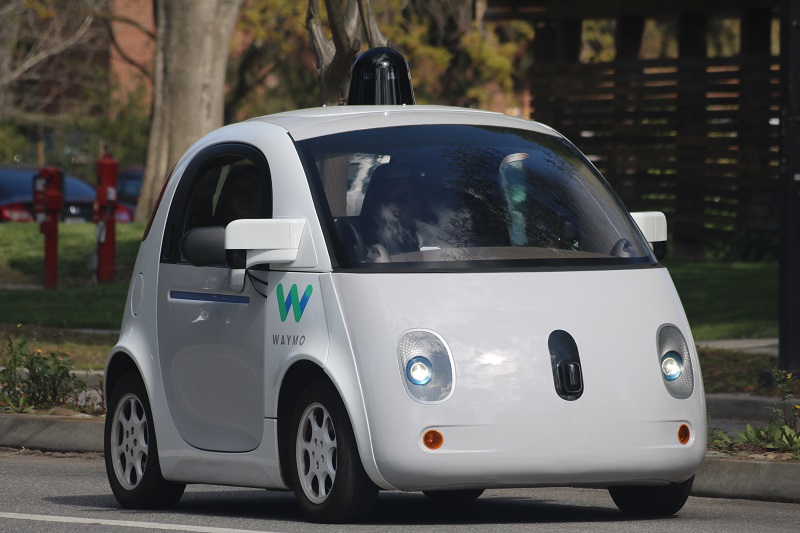
Another element of the MaaS system is unmanned vehicles, such as this is a prototype from Waymo. Source: Grendelkhan / Wikimedia Commons
MaaS Automotive
If integration into one system of all types of public transport (hereinafter referred to as OT) is an obvious step, the automobile component of MaaS should be commented separately. Meanwhile, we can confidently assume that the most effective way to refuse personal cars is ... cars, rather than affordable and convenient public transport. The popularity of car sharing in Russia (17 million trips to Moscow in 2018) and the world only confirms this - it is more pleasant for a person to travel alone or with his company from point A to point B than to get to stops and make transfers. And therefore, car sharing is a full-fledged stage in the development of automotive MaaS, although not the last.
Unmanned cars became the main harbinger of turning cars into an element of transport service. Unlike car sharing, which you need to walk to, if the car is at all within reach, the drone arrives at the client itself. Uber, a drone development company, immediately announced that it plans to use autonomous cars as a taxi without a driver. The same plans were voiced by Tesla, Waymo, Lyft, Toyota and GM. Moreover, Toyota emphasizes the fact that it is going to supply its unmanned vehicles for MaaS around the world. In theory, unmanned taxi rides will be cheaper than now - taxis and paid drivers will drop out of the chain.
MaaS aggregation
At the end of 2016, the Whim startup was launched in the Finnish capital Helsinki, which later expanded to the Belgian Antwerp and English Birmingham. This MaaS service is a mobile application for planning and paying for city trips. Now no one will be surprised by applications for building a route that take into account different types of transport. But Whim in 2016 was distinguished by the fact that with its help it was possible not only to see where and on which tram or bus to get to the destination - through the Whim app you could immediately pay for a trip by transport.

At first glance, Whim resembles Google Maps - the same route planning, the same options with different types of public transport. Source (hereinafter, unless otherwise indicated): Toshiba
Whim operates not only with public transport, but also with taxi, car and bike sharing, if the user wants to use them on a trip. Since Whim turned transport into a service, the tariff policy has become much more service. The user can stay at a free rate with a separate payment for each trip - this is not the most attractive offer for obvious reasons.
Whim is very close to the implementation of upper-level MaaS, but as they say, there is a nuance: in Helsinki, the service has only 5100 users with a paid subscription (and it is not known how many of them are with Ultimate). In order to establish partnerships with transport service providers, offer customers low prices and profit themselves, Whim needs to get at least 60 thousand paid subscriptions. While the service lives on investment.
MaaS on call
In order to turn mobility into a service, it is not at all necessary to adapt the existing urban public transport infrastructure. Commercial transportation services can be launched, but this is not about taxis.
The British ArrivaClick, the project of the largest English bus operator Arriva UK Bus, is a “call-by-bus” service - a cross between a taxi and regular route transport: if a taxi carries only its customer from one point he chooses to another, and OT follows strictly known route and nothing else, the ArrivaClick buses dynamically change their route depending on the wishes of customers.
Roughly speaking, ArrivaClick buses have some approximate city routes, from which they deviate to pick up service users closer to home and drop them closer to their destination - not “door-to-door” like a taxi, but with a difference of only tens of meters from the points.
Let's say you need to get from the north of the city to the south to the train station. Choose your location and destination in the ArrivaClick application, and the service finds a bus for you that can drive as close to you as possible in the shortest possible time, and take you directly to the train station directly, without transfers. The peculiarity of ArrivaClick is that, unlike a taxi that personally carries you, the service bus already carries passengers. While you will be traveling from home to the station, the bus will deviate slightly from the shortest route in order to pick up or drop off other users who are on the way with you (or you are on the way with them).
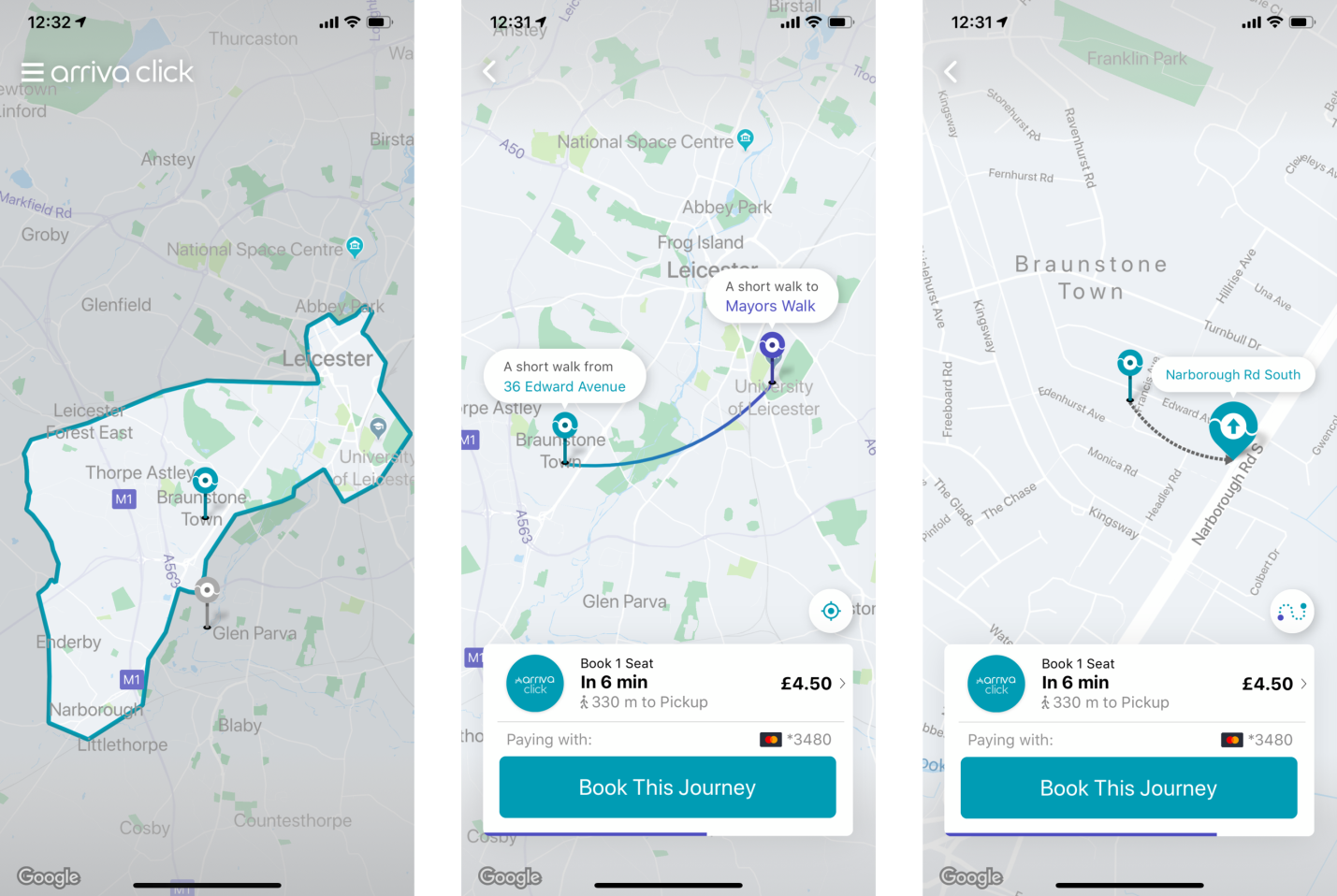
In a very concise ArrivaClick application you can see the bus operating area, the cost of the trip to the selected point, the nearest place and time of arrival of the bus for the client. In this example, a Leicester would have to walk 330 meters to the nearest intersection in order to catch a bus
What are the advantages of ArrivaClick in comparison with taxi and OT? Firstly, it is much cheaper than a taxi: the cost of a trip slightly exceeds the cost of a ticket in public transport. Secondly, unlike OT, ArrivaClick buses will arrive to you within 5-15 minutes, or at the time specified through the application. Thirdly, the bus will approach the nearest intersection near your location - you may need to walk to it, but no longer than five minutes; they will drop you off at the intersection closest to the destination. True, it’s better not to be late for boarding, the bus only waits 60 seconds, after which it leaves, and the cost of the trip is deducted from the client.
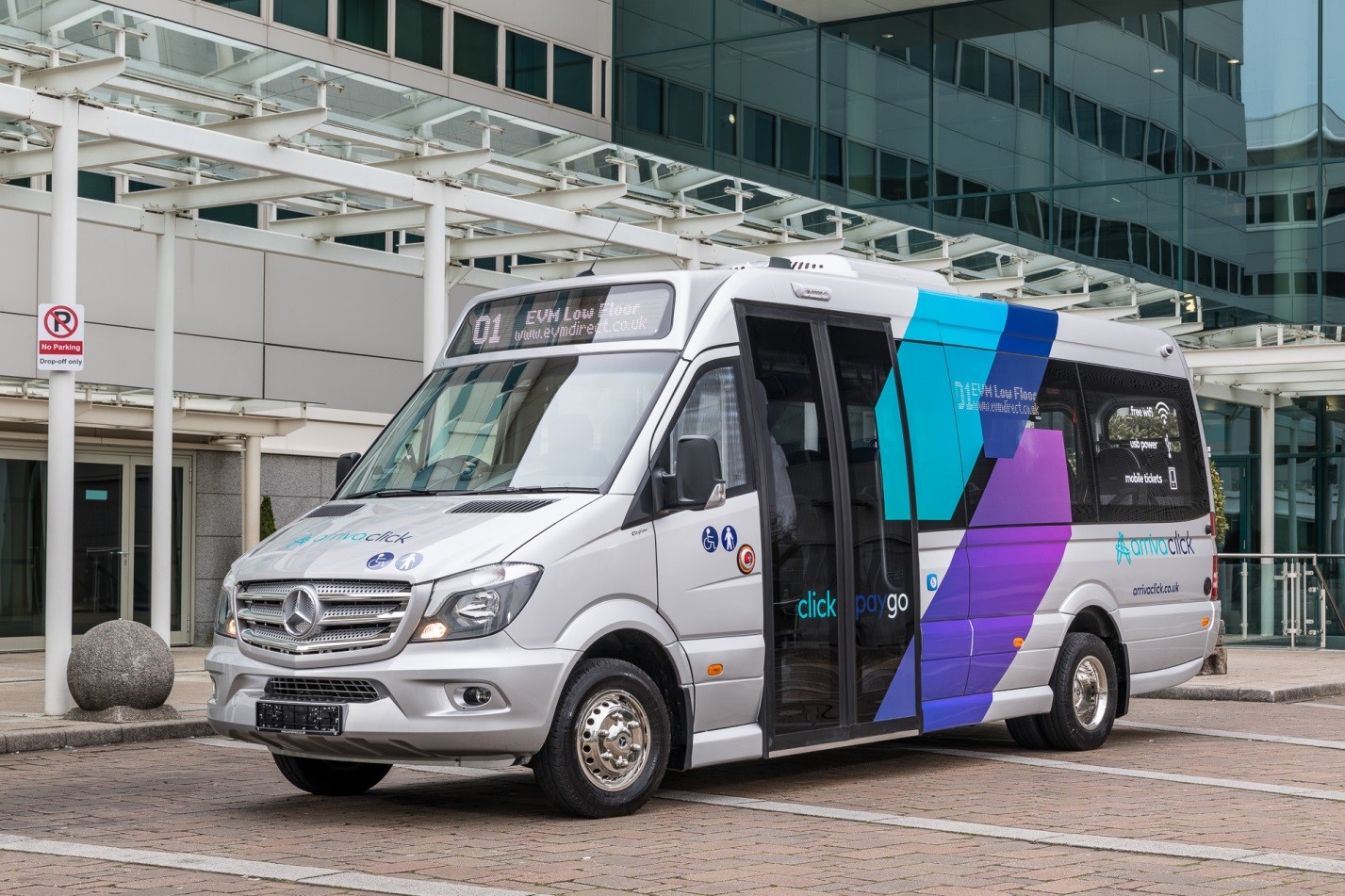
ArrivaClick uses comfortable Mercedes-Benz Sprinter with a ramp for wheelchairs, tables and Wi-Fi. Source: Arriva
Japanese MaaS and boot problems
Remember the classic situation: in the evening you are standing at a bus stop and waiting for your bus, and empty buses of another route pass one by one. There are planning errors - there is an oversupply of cars on unclaimed routes, and on the opposite, exactly the opposite. Without proper planning of the route grid and its loading, the public transport park can be inflated to a colossal size, but the efficiency of its use will only fall.
In large cities, such errors can be fixed without much difficulty. But the organization of public transport in agglomerations can be a headache, especially in sparsely populated areas. This situation was encountered in Japan, where, due to motorization and the relocation of young people to large cities, the suburbs began to empty, and their population was mainly composed of elderly people. The former OT route network began to decline, as the number of passengers decreased significantly.
The JUNPUZI company, which launched the MaaS bus service called Convenicle, a Japanese analogue of ArrivaClick, appeared much earlier to solve the problem. Their buses move along flexible routes, picking up passengers at public transport stops if an application for this stop arrives in advance. Since applications are collected in advance, the bus route is also calculated in advance.
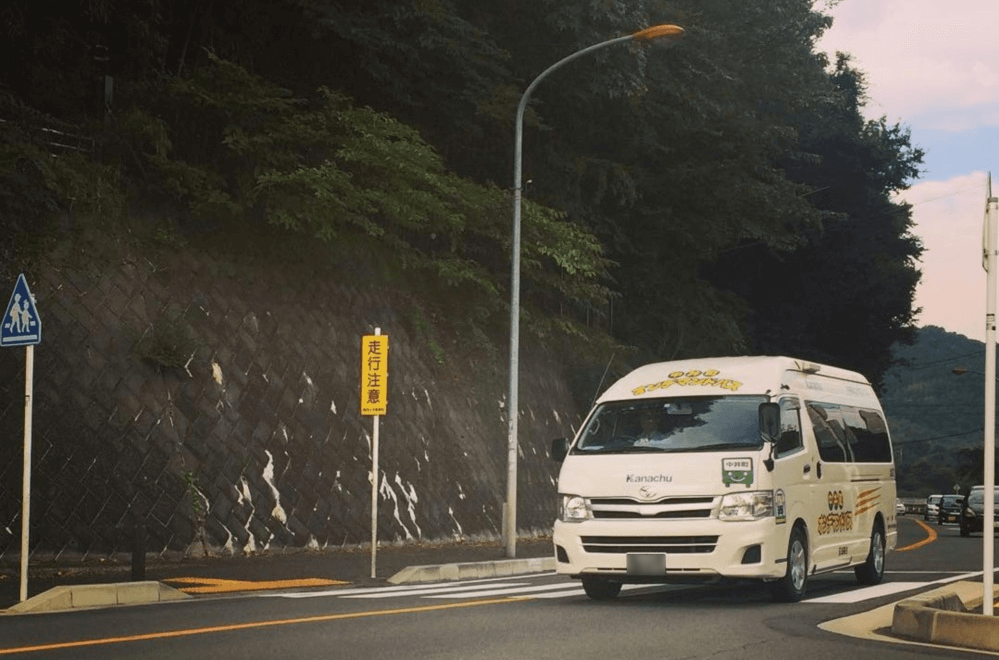
Convenicle bus marching across sparsely populated Japanese suburbs
Okay, the bus is moving according to the wishes of the workers, so what's the problem? But the problem is that in an attempt to take into account all the desired stops, the route of the bus can be very complicated, the risk of getting stuck in traffic is higher, the trip time increases, and as a result, traveling in such a “call bus” can turn into a long torture. In addition, bus loading is less on some sections of the route, much more on some, and the capacity of the service minibuses is very limited. To increase the fleet of minibuses means to repeat the path of municipal public transport with a bloated staff and low load.
Toshiba SATLYS collects a puzzle of routes
The only possible way out was to calculate and predict the load on the service with the aim of preliminary constructing optimal routes even before customers place orders. The owner of the Convenicle service - JUNPUZI - turned to Toshiba with this task.
Over the nine years of its existence, Convenicle has collected an enormous amount of data on trips that had to analyze and derive patterns in order to predict the demand for buses and not drive them empty. Toshiba SATLYS, a specially developed AI, took up this task. At first, SATLYS deduced 100 of the most popular routes, but no particular regularity was found - no AI is needed to identify popular routes.
After the first result, the most interesting part of the analysis began. SATLYS overlaid all Convenicle data on weather reports from the Japan Meteorological Agency. And then the dependencies showed up: it immediately became obvious that on rainy days in certain areas the demand for Convenicle services is growing. To satisfy him, in these areas it is necessary to increase the number of buses passing through them by 20%. Every day such a stream of cars is not needed, but in bad weather, route priorities need to be rebuilt. Or, for example, on a popular route on Sundays, the bus travels twice as long due to traffic jams, and this is an occasion to slightly change the path.
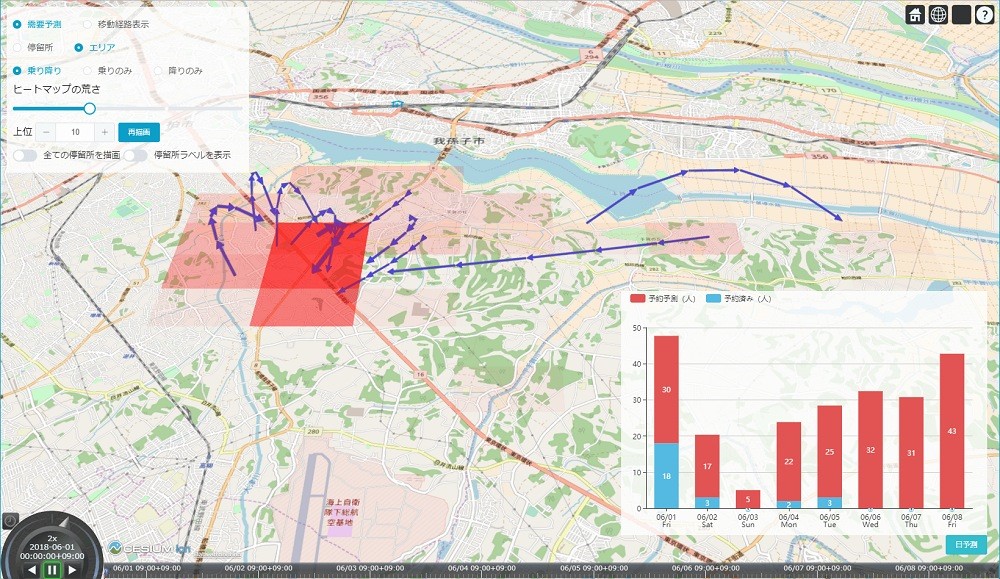
Heat map with Convenicle demand depending on the day of the week, time and weather
Based on the results of Toshiba SATLYS, a heat map of the demand for Convenicle buses and “hot” routes was created depending on the day of the week, time and weather.
In the end, SATLYS helped find a balance between optimizing routes for a uniform load on buses and the quality of passenger service - that is, reducing the time for serving the bus and reducing standing in traffic jams.
MaaS in Russian
Mobility as a service has long penetrated into Russia - if you look at the list of MaaS levels, you can see familiar signs: for example, the Moscow Troika transport card first combined land transport and metro, which previously required different travel cards, and then became a payment method for others services: cycling, Aeroexpress, parking, skating rink at VDNH and so on.
With regard to the development of IT infrastructure, MaaS has particularly succeeded Yandex. Using Yandex.Transport, you can track the location of ground transport on the map in real time, build routes, book car sharing and replenish transport cards - these are the third level MaaS. In the future, it is likely that payment for transport services through the Yandex application will appear, which will mark the transition of Russian transport to the fourth level of MaaS.
In 2016, the new Magistral public transport route network was launched in Moscow, based on statistics on the popularity of Moscow's attraction points. Each route of the system is much longer than the usual local routes, “Highway” permeates almost the entire city from beginning to end, passing through the central regions. Let “Highway” not be attributed to MaaS, however, it represents a new approach to the organization of traffic. Given the proven efficiency of the Highway (passenger traffic growth from 30% to 55%), the appearance of call buses in Moscow seems real, although there are no such plans so far.
